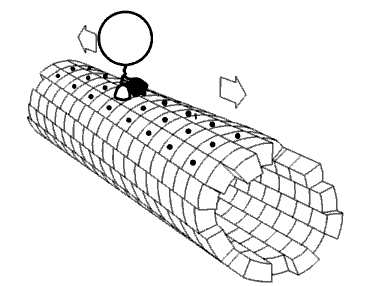
Photo from academic.microsoft.com
Many of the ways that cells talk and listen to the external world center on the presence of proteins on the cell surface. Indeed, the cell membrane is an amazingly… Click to show full abstract
Many of the ways that cells talk and listen to the external world center on the presence of proteins on the cell surface. Indeed, the cell membrane is an amazingly diverse lipid environment, riddled in turn with a host of different proteins that perform tasks ranging from sensing and measuring chemical signals to the transport of sugars needed for cell division to the detection of potentially lethal osmotic pressures. This talk will focus on recent progress in the dissection of the mechanisms of mechanosensation in bacteria with special reference to the rich interplay between certain classes of ion channels and the surrounding lipids and how that interplay sculpts the response of bacteria to osmotic insults.
Journal Title: Biophysical Journal
Year Published: 2018
Link to full text (if available)
Share on Social Media: Sign Up to like & get
recommendations!